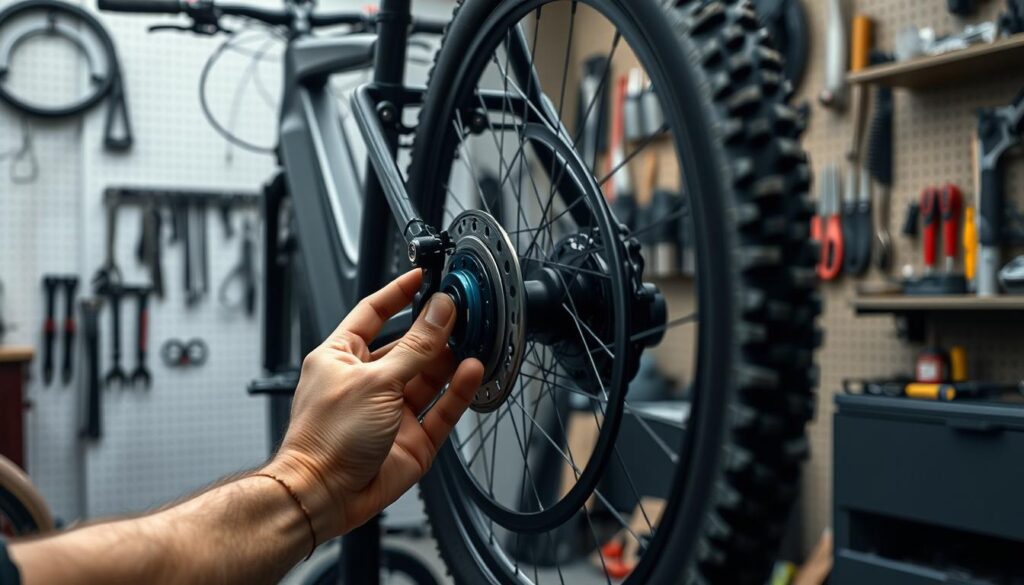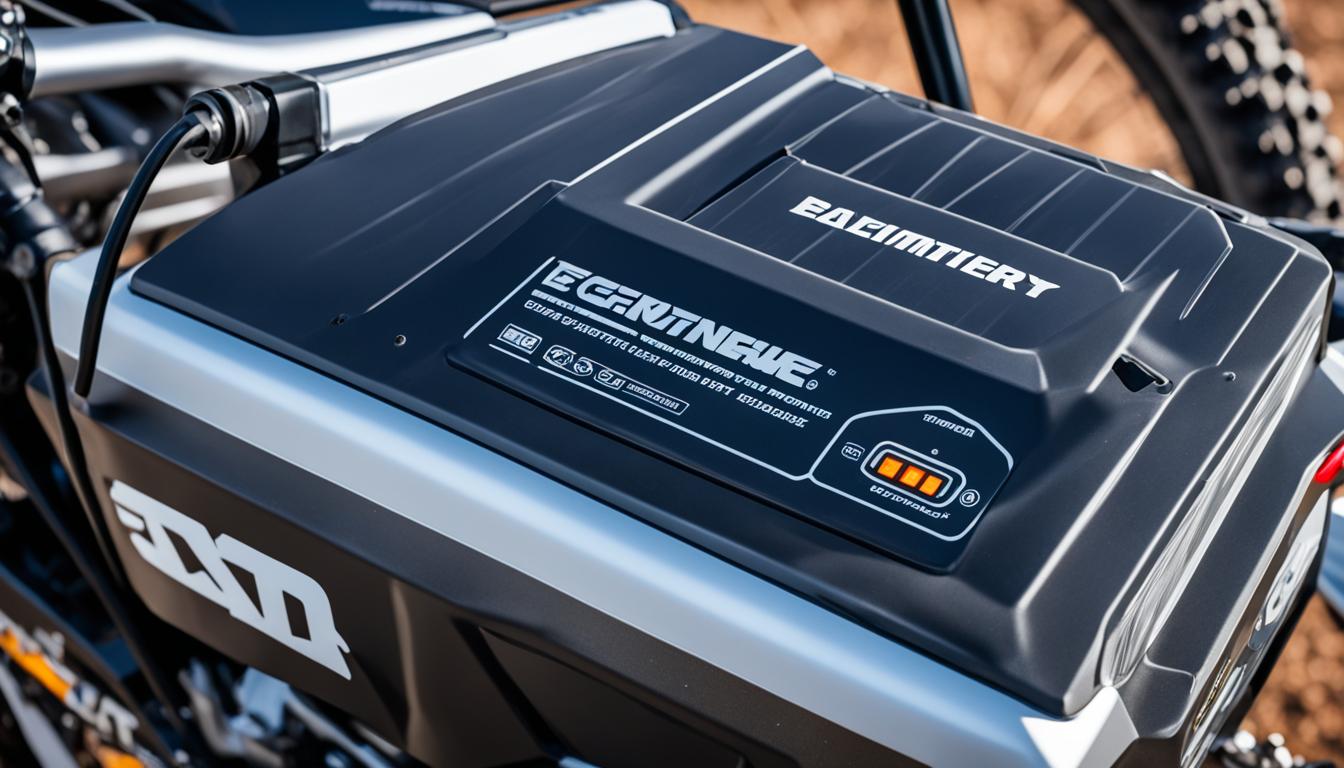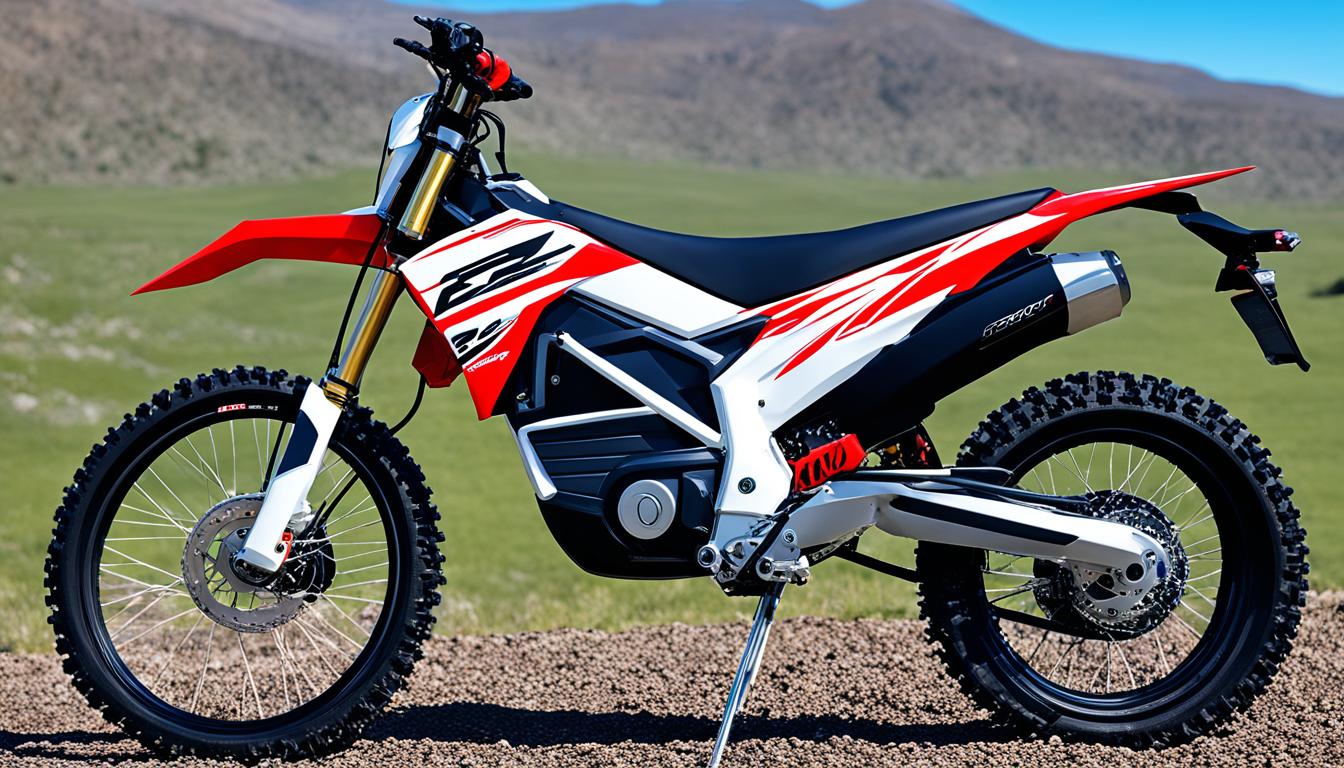Riding your e-bike should be a smooth and safe experience, but did you know that neglecting your brake system can lead to serious issues? Whether you’re cruising through city streets or tackling rugged trails, your brake pads and lever play a crucial role in keeping you secure. Regular checks and proper care can make all the difference.
Understanding the difference between hydraulic and mechanical systems is key. Hydraulic brakes offer better stopping power, but they require more frequent professional service. On the other hand, mechanical brakes are easier to maintain but may need more frequent adjustments. Knowing which system your model uses can help you plan your repair routine effectively1.
This guide will walk you through essential tips, from inspecting your brake pads to cleaning and replacing components. Whether you’re a seasoned rider or new to the world of e-bikes, these insights will help you stay safe and extend the life of your brake system. Let’s dive in!
Understanding Your Electric Bike Brake System
The type of brakes on your ride can significantly impact your safety and performance. Whether you’re cruising through city streets or tackling rugged trails, knowing how your system works ensures smoother and safer journeys. Let’s break down the two main types: hydraulic and mechanical.
Hydraulic vs Mechanical Brakes
Hydraulic disc brakes offer superior modulation and stopping force compared to mechanical disc brakes, but they are generally more expensive and complex to maintain2. They’re ideal for riders who need precise control, especially in challenging conditions. On the other hand, mechanical disc brakes are more affordable and easier to maintain, though they may require more frequent adjustments3.
Both systems have their place. Hydraulic brakes are heavier but provide better stopping power, while mechanical brakes are lighter and simpler to repair. Knowing which one your ride uses can help you plan your care routine effectively.
Key Components and How They Work
Your e-bike’s stopping system relies on several key parts. Calipers squeeze the brake pads against the rotors to slow down or stop your ride. The brake levers on your handlebar control this action, making them a crucial part of the system.
Most e-bikes are equipped with 180 mm rotors, while lightweight models often feature 160 mm rotors. Heavier rides can have rotors up to 203 mm in diameter2. Brake pad thickness can deteriorate with frequent use, so regular checks are essential to prevent failure2.
“Proper care of your brake system ensures safety and extends its lifespan. Always consult your manual or a professional for complex repairs.”
Understanding these components and their functions is key to effective service and repair. Whether you’re inspecting pads or cleaning rotors, a little knowledge goes a long way in keeping your ride safe and reliable.
Electric bike brake maintenance: Essential How-To Guide
Keeping your ride safe starts with understanding your brake system. Whether you’re a seasoned rider or new to e-bikes, regular checks and proper care can make all the difference. Let’s dive into the essential steps for inspecting, cleaning, and replacing your brake components.
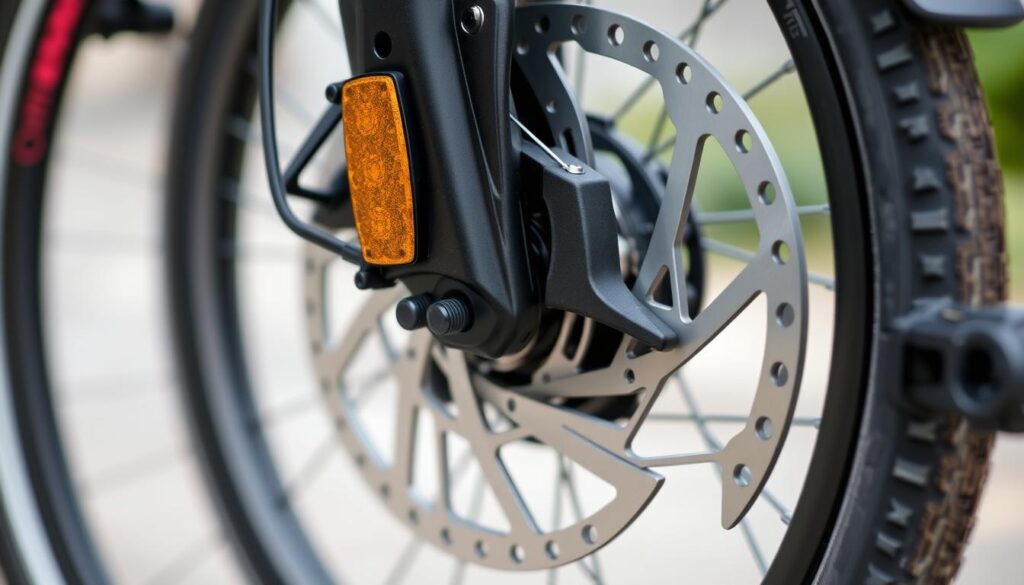
Step-by-Step Brake Inspection
Start by checking your brake lever. It should feel firm and responsive. If it feels spongy, there might be air in the lines, a common issue in 15% of hydraulic systems4. Next, inspect the brake pads for wear. Use a ruler or micrometer to measure the thickness. If it’s below 1.5 mm, it’s time for a replacement4.
Remove the brake adapter and bolts carefully. Clean the rotor with alcohol to remove dirt or oil, which can reduce braking power by up to 30%4. Check for bent rotors, as they can cause noise or rubbing in about 10% of e-bikes4.
Cleaning and Replacing Brake Pads
If your pads are worn or contaminated, remove them and clean them with sandpaper. Reinstall them securely, ensuring they align properly with the rotor. For hydraulic systems, check the fluid level and bleed the brakes if necessary. This is a task 25% of owners prefer to leave to professionals4.
For mechanical systems, adjust the cable tension to improve responsiveness. Regular cleaning and proper reinstallation can boost braking efficiency by up to 20%4.
| Component | Inspection Step | Action Required |
|---|---|---|
| Brake Lever | Check firmness | Bleed if spongy |
| Brake Pads | Measure thickness | Replace if |
| Rotor | Check for bends | Clean or replace |
By following these steps, you’ll ensure your brake system is in top shape. For visual guidance, consider watching instructional videos. Regular maintenance not only keeps you safe but also extends the lifespan of your components5.
Practical Tips and Tools for E-Bike Brake Service
Ensuring your e-bike’s stopping system is in top shape requires the right tools and know-how. With the proper equipment and a little effort, you can keep your ride safe and reliable. Let’s explore the essentials for effective brake care.
Recommended Tools and Materials
Having the right tools makes brake service straightforward. Start with a set of Allen wrenches for adjustments and a micrometer to measure pad thickness. Sandpaper is handy for cleaning pads, while isopropyl alcohol ensures rotors are free of contaminants.
For hydraulic systems, a bleed kit is essential to maintain fluid levels. Specialized lubricants can also improve cable performance. Regular maintenance can extend the lifespan of brake pads by up to 50%6.
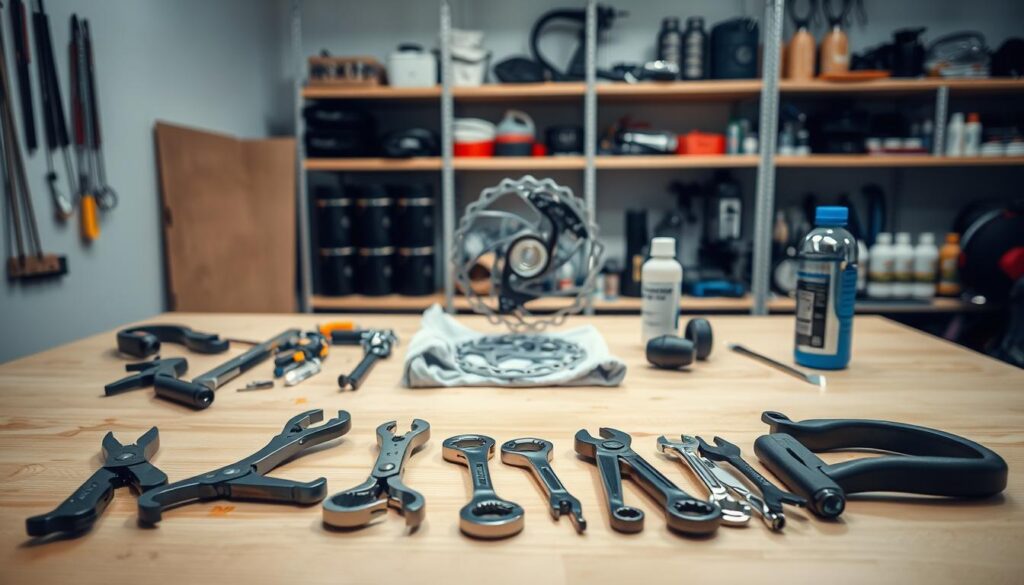
Troubleshooting Common Brake Issues
Slow fluid leaks or improper lever alignment are common problems. If your lever feels spongy, it might indicate air in the lines, a frequent issue in 15% of hydraulic systems6. Check for bent rotors, which can cause noise or rubbing in about 10% of e-bikes6.
For mechanical systems, adjust cable tension to improve responsiveness. Proper alignment can boost braking efficiency by 15-20%7. If issues persist, consult a professional for hydraulic brake bleeding or complex repairs.
Safety Checks and Preventative Measures
Regular inspections are key to avoiding unexpected failures. Check brake cables and housing every 500 miles to ensure optimal performance7. Verify pad thickness; replace them if they’re below 1.5 mm6. A properly trued rotor can reduce noise by up to 70%6.
Maintain a clean workspace to ensure effective brake performance. Schedule regular service intervals to keep your system in top shape. Proper care not only keeps you safe but also saves you money in the long run.
“Regular maintenance is the foundation of a safe and reliable ride. Always follow manufacturer guidelines for best results.”
Conclusion
Your safety on the road depends heavily on the condition of your stopping system. Regular inspections and proper care ensure your brake pads and lever function optimally. Whether you’re using hydraulic or mechanical systems, understanding their differences helps you plan effective care routines8.
Cleaning components and checking for wear can prevent unexpected issues. If you’re unsure about any steps, consult a professional or watch instructional video guides. Proper care not only keeps you safe but also extends the life of your components9.
Investing time in your stopping system is crucial for a smooth and secure ride. For expert advice or replacement services, visit a trusted shop. Thank you for reading, and we hope this guide helps you stay safe on every journey!
Source Links
- Mastering E-Bike Brakes: Your Comprehensive Guide to Safety and Performance
- Comprehensive Guide to Ebike Brakes: Performance, Maintenance, and Safety
- Complete Guide to Ebike Brakes Performance, Maintenance, and Safety
- The Ultimate Guide to Electric Bike Brake Service and Maintenance Tips – San Diego Electric Bike Service & eBike Repair Near Me
- E-Bike Brake Maintenance Guide
- eBike Brake System Service Guide
- What Are the Essential Tools for E-Bike Repair?
- Comprehensive Guide to Ebike Brakes: Performance, Maintenance, and Safety
- E-Bike Braking Performance, Maintenance and Safety
